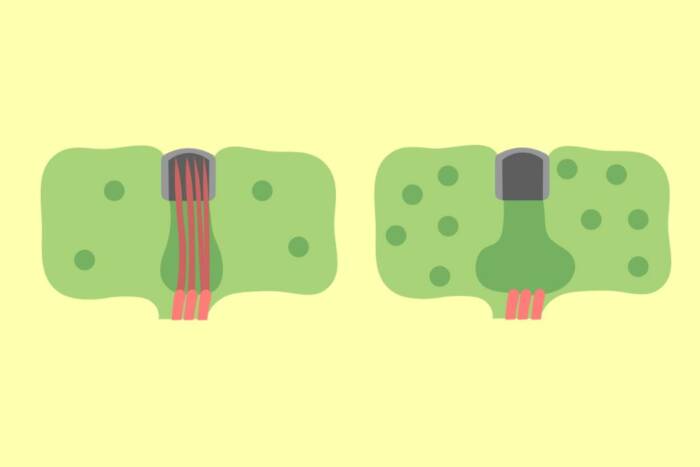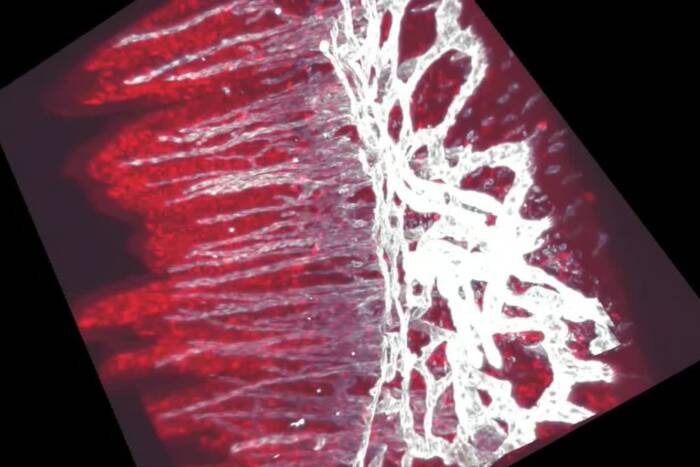Rockefeller Researcher Roderick MacKinnon Receives 1999 Lasker Award

Roderick Mackinnon, M.D.
Rockefeller University Professor Roderick MacKinnon, M.D., has been named a recipient of the 1999 Albert Lasker Basic Medical Research Award, the nation’s most distinguished honor for outstanding contributions to basic and clinical medical research. Roderick Mackinnon, M.D.
MacKinnon, head of Rockefeller’s Laboratory of Molecular Neurobiology and Biophysics and an Investigator with the Howard Hughes Medical Institute, shares this year’s Lasker Award for Basic Medical Research with two other scientists for “elucidating the functional and structural architecture of ion channel proteins, which govern the electrical potential of membranes throughout nature, thereby generating nerve impulses and controlling muscle contraction, cardiac rhythm and hormone secretion.”
The other two recipients of the award for Basic Medical Research are Bertil Hille, Ph.D., a Rockefeller University alumnus who is a professor of physiology and biophysics at the University of Washington, and Clay M. Armstrong, M.D., a professor in the Department of Physiology at the University of Pennsylvania School of Medicine.
In 1998, MacKinnon’s laboratory solved the structure of the potassium ion channel, and the three-dimensional image of the channel was published on the cover ofScience magazine, which labeled the breakthrough one of the ten biggest science stories of the year. MacKinnon modestly called his research “as basic as it gets,” but other scientists strongly praised his work. “A remarkable accomplishment,” proclaimed Armstrong, who reviewed MacKinnon’s paper in the same issue of Science. “It is a dream come true for biophysicists.”
The transfer of potassium ions across cell membranes has long been understood as an essential activity for many life-sustaining functions. The proper balance of these ions is essential for fundamental operations, such as the transmission of nerve impulses throughout the body and brain. But until MacKinnon captured an image of the channel, it was not well understood how the process actually worked.
Shaped like tiny doughnuts floating in oil, ion channels perform the dual functions of gateway and gatekeeper. The holes in the doughnut form the gateway through which the ions flow. However, these holes, or pores, are endowed with special properties that enable different channel proteins to be selective as to which ions they allow passage.
MacKinnon sought to understand the structure of the protein and the answers to two compelling questions: What do these channels look like? And how are they able to allow passage of potassium ions while blocking other ions that are similar? Using electrophysiological and biochemical approaches, MacKinnon studied the interaction of the potassium channel with a specific toxin derived from scorpion venom and figured out that the toxin blocked the flow of ions by sitting directly on the pore of the channel. He then exploited the toxin to analyze the subunit structure, the moving gates and the ion conduction pathway of potassium channels.
MacKinnon calls the design of the potassium ion channel protein “elegant in its simplicity.” The balance of electrical forces and chemical bonds inside the protein not only send potassium ions through the channel rapidly but also keeps out most other ions. MacKinnon’s research may plan an important role in the development of drugs to deal with diseases ranging from diabetes to heart problems.
The scientific community has recognized MacKinnon’s contributions and bestowed upon him some of its highest honors: MacKinnon is a member of Alpha Omega Alpha Medical Honors Society, a PEW scholar in the Biomedical Sciences and the recipient of the Mcknight Scholars Award, the Biophysical Society Young Investigator Award, the Mcknight Investigator Award, the W. Alden Spencer Award and the AAAS Newcomb Cleveland Prize.
“My belief is that if you do good science, science will take care of you,” MacKinnon says. “If you tackle a problem and keep working on it, eventually you will find some kind of outcome.”
Click here for more on his research: The Structure of Ion Channels


